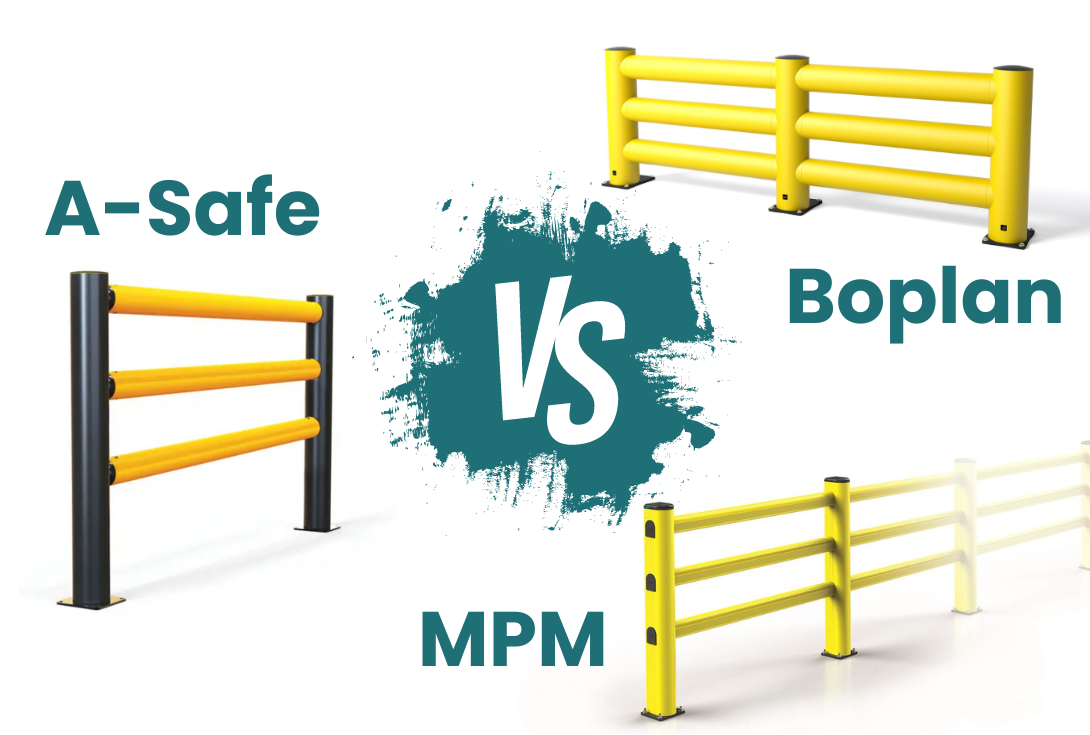Is Your Cleanroom Barrier a Hidden Compliance Risk?
 By
Alana Graham
·
2 minute read
By
Alana Graham
·
2 minute read
Your cleanroom is spotless. Your team is trained. But if your safety barriers are shedding particles or corroding under washdowns, you're still at risk.
Cleanrooms power some of the most critical industries on the planet, including pharmaceuticals, food production, and electronics manufacturing.
But while most compliance efforts focus on airflow, attire, and sanitation protocols, one essential element is often left out of the internal compliance audit:
The barriers that keep your cleanroom segregated and safe.
When we talk to clients who have cleanrooms at their facilities, it’s the first thing we ask.
That’s because safety barriers have evolved in major ways, becoming smarter, more hygienic, and more adaptable.
If you haven’t re-evaluated your cleanroom barrier system lately, now is the time.
Here’s why it matters and what you can do:

The Overlooked Culprit: Steel Barriers
Steel barriers have long been the default choice in industrial and controlled environments. They’re familiar, durable, and easy to justify on paper.
But in cleanroom environments, steel brings serious drawbacks that directly impact compliance and contamination risk:
🔸Cleaning complexities: Welds, joints, and rough surfaces create crevices where contaminants accumulate. That makes sanitation, validation, and ISO 14644 compliance harder.
🔸Corrosion risk: Harsh cleaning agents eventually corrode steel, leading to rust - a breeding ground for bacteria.
🔸Particulate shedding: Impact or age can release microscopic metal fragments, compromising cleanroom air quality.
🔸Disruptive maintenance: Replacing steel barriers requires welding, sparks, and tools - hardly ideal in a sterile environment.
Still think steel is the safe bet for cleanroom safety barriers?
Why Polymer Barriers Are Transforming Cleanroom Compliance
Polymer safety barriers were designed with cleanroom performance in mind. More facilities are making the switch, and here’s why:
✅Smooth, seamless surfaces: No crevices or grime traps - surfaces validate easily.
✅80% less bacterial adhesion: According to ISPE research, smooth polymer surfaces reduce contamination risk dramatically.
✅Chemical resistance: Disinfectants and aggressive cleaning agents won’t degrade or discolour high-quality polymers.
✅No particle shedding: Unlike metal, polymers maintain their integrity after impacts.
✅Modular and flexible: Reconfiguring layouts doesn’t require welding or sparks - just snap-in, snap-out convenience.
Switching to polymer barriers for cleanrooms means fewer contamination risks and easier compliance with GMP, FDA, and ISO standards.

What Should You Look for in a Cleanroom Safety Barrier?
Before you spec another steel barrier, ask yourself:
➡️Can it withstand impacts without shedding or corroding?
➡️Does it save space in high-value cleanroom areas?
➡️Will it resist harsh UV and chemical exposure?
➡️Can it integrate with digital safety monitoring systems or floor projection technology?
➡️Does it come with full compliance documentation (GMP, FDA, ISO 14644)?
If the answer isn’t yes, it’s time to rethink your cleanroom safety barrier system.
Don't Let Outdated Barriers Undermine Compliance
You wouldn’t install outdated air filtration tech or flooring that couldn’t be validated. So why accept substandard safety barriers?
Upgrading to polymer cleanroom barriers isn’t just about better materials. It’s about:
- Reducing compliance risk
- Minimising downtime and maintenance costs
- Supporting a cleaner, more controlled environment
In short, it’s about future-proofing your cleanroom facility.
Learn more about polymer barriers here.
.jpeg?width=1600&height=1200&name=WhatsApp%20Image%202024-10-31%20at%2015.05.43%20(1).jpeg)
What Now?
You don’t need to rip out every barrier tomorrow. But you do need a strategy.
We can help you audit your current barrier systems, highlight compliance risks, and recommend polymer safety barrier alternatives that meet cleanroom standards.
👉 Get in touch to book your site assessment.

.jpeg)
